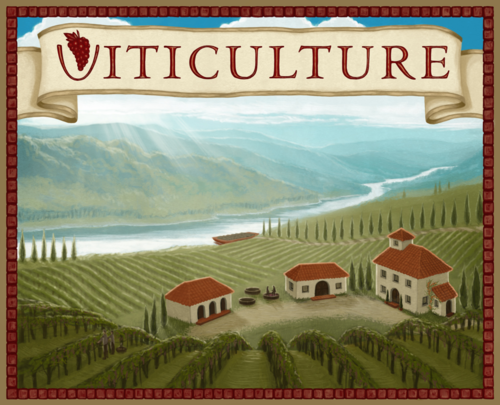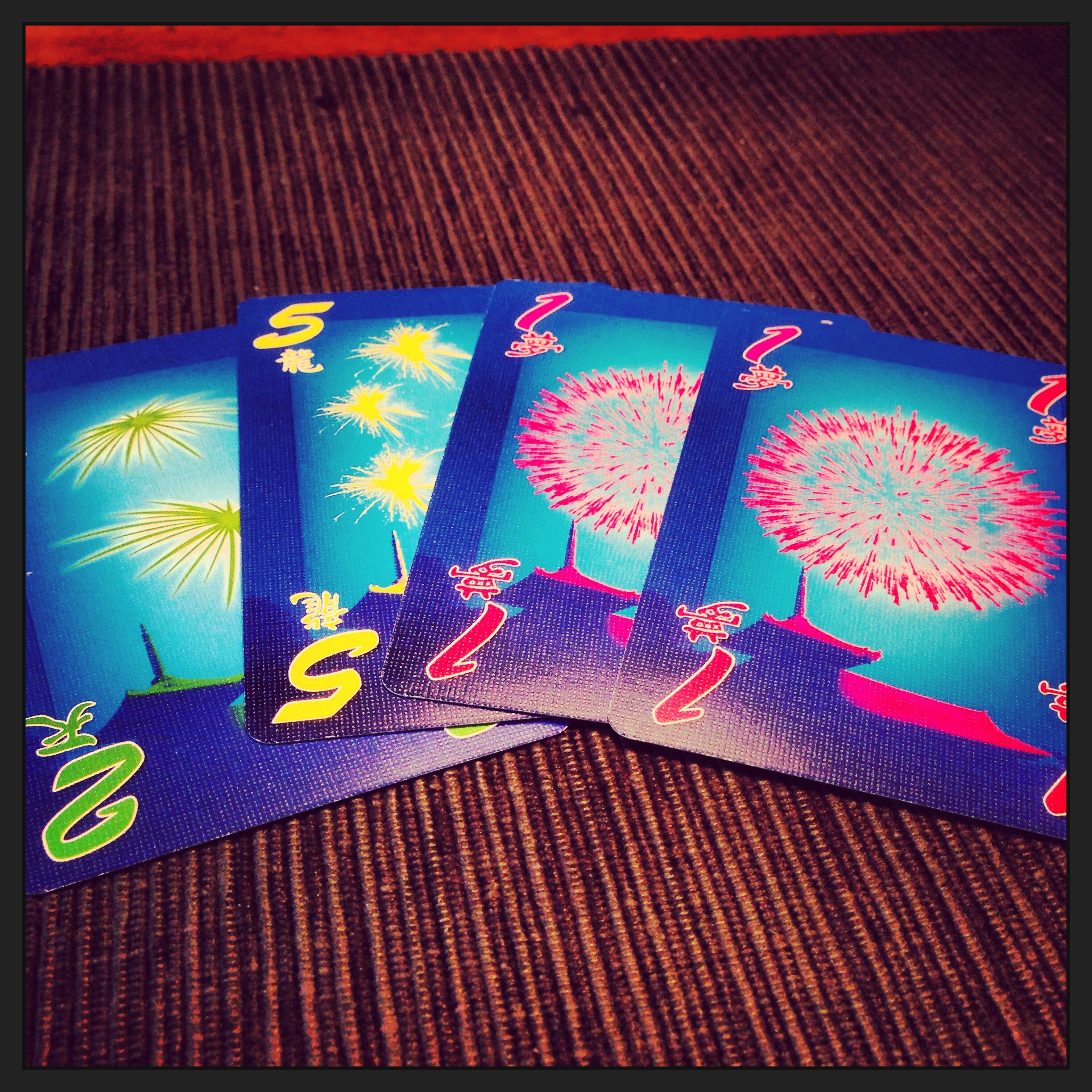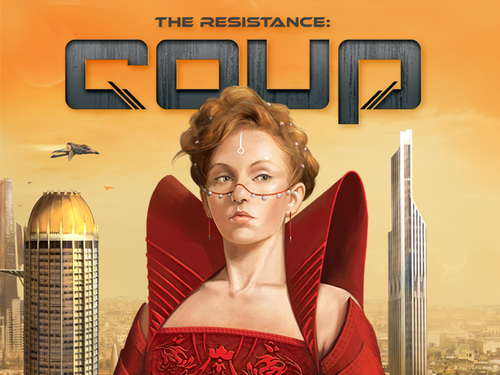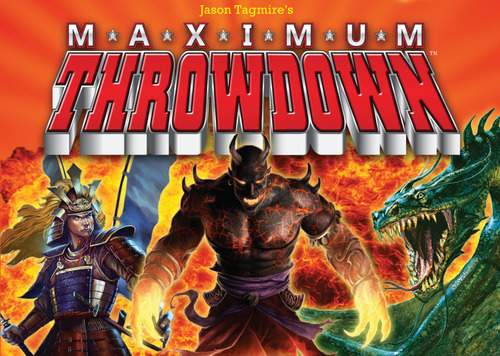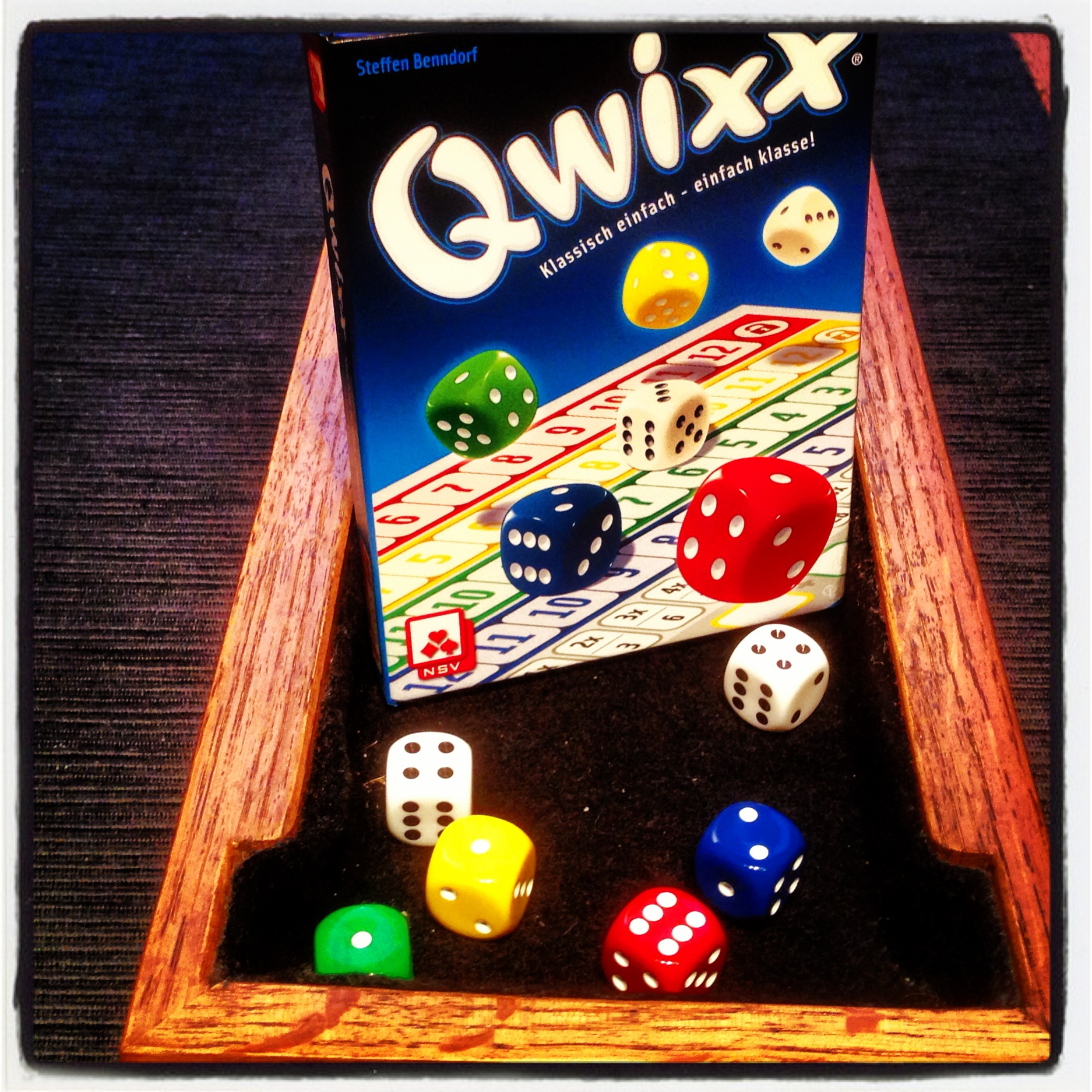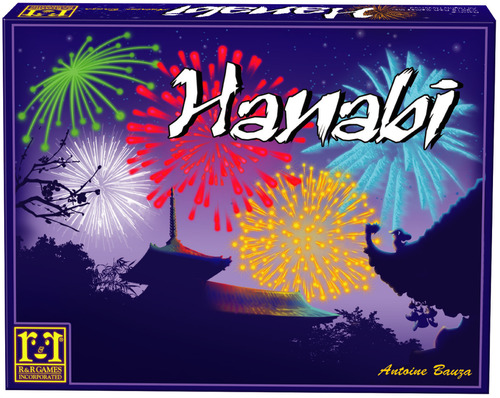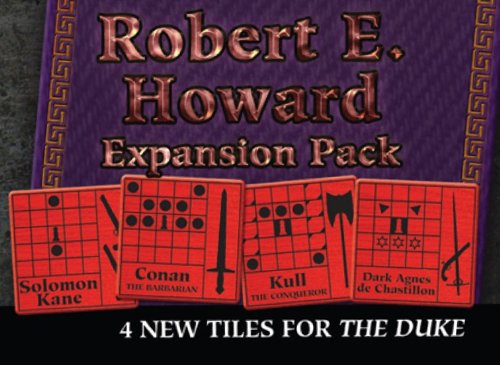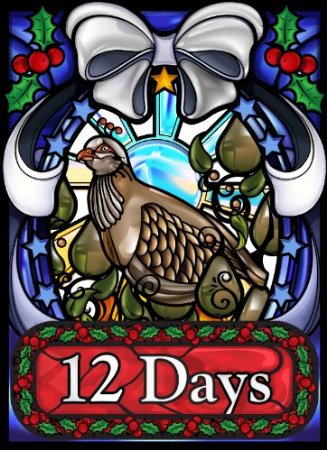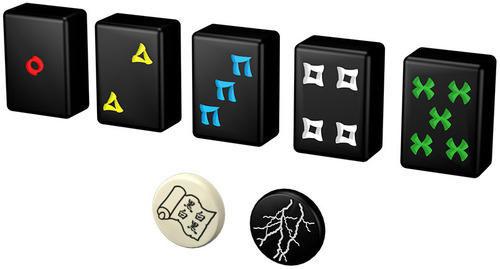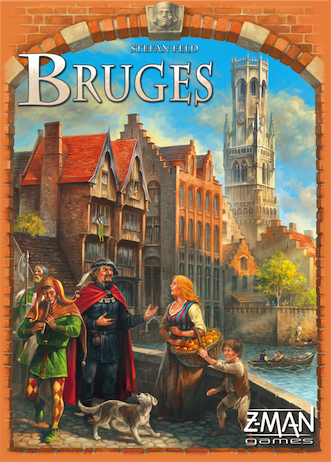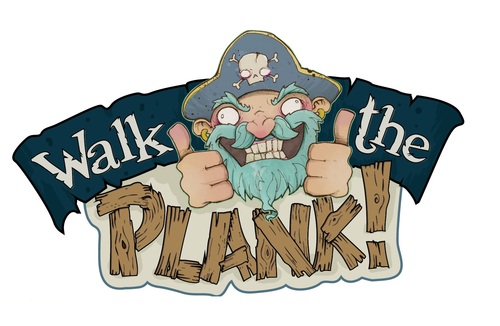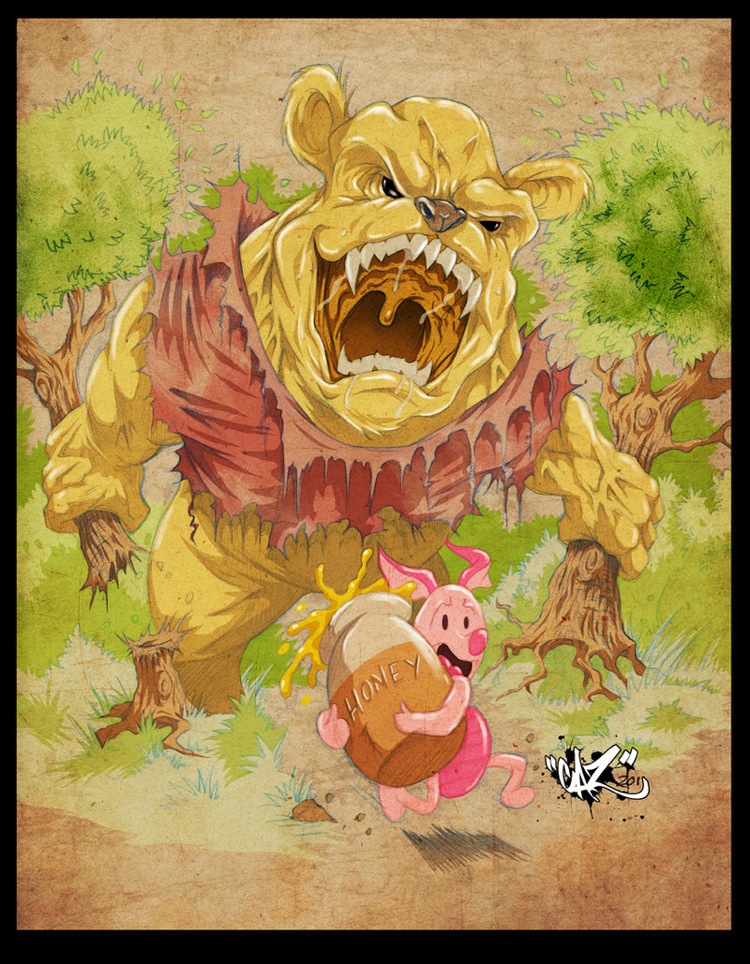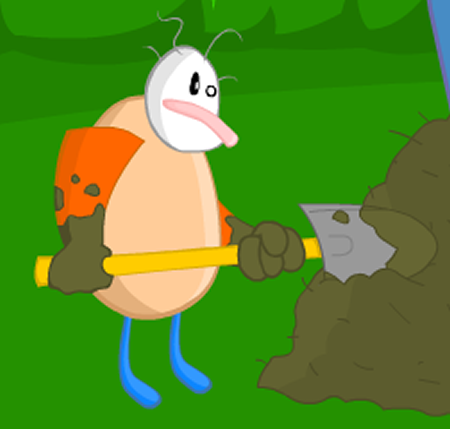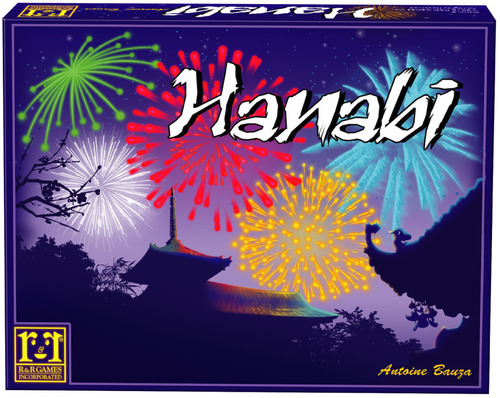 by Firestone
Well, the Spiel des Jahres were announced earlier in the week, and I was delighted to hear that Hanabi won! What's so great about this co-op card game? Well let's find out...
by Firestone
Well, the Spiel des Jahres were announced earlier in the week, and I was delighted to hear that Hanabi won! What's so great about this co-op card game? Well let's find out...
The game was recently printed in the US by R&R Games, so that's one I'll be reviewing.
Hanabi is a cooperative game for 2 to 5 players, where your team is trying to put on the best fireworks show. It's possible to lose the game, but that's fairly rare—it's usually just a matter of how awesome (or crappy) your fireworks display will be. The best you can do is 25 points, and it goes down from there...
Components
60 cards—there are six suits, each with three 1's, two 2's, two 3's, two 4's, and one 5.
8 Blue Clock Tokens
4 Black Fuse Tokens

Setup
Place the blue clock tokens faceup on the table, and stack the four black fuse tokens nearby, with the longest fuse on top and the explosion on the bottom.
You only use five of the six suits—the sixth one is a multicolor suit that is for an advanced variant. This isn't one of those games where you should just jump into the advanced game right away—the basic game will kick your butt.
So you take the 10 cards in the five suits, shuffle them all together, and deal five cards to each player in a 2- or 3-player game, or four cards in a 4- or 5-player game.
Here's the unique thing about this game: You never, ever, look at your own cards! EVER! When the cards are dealt to you, you hold them facing away from you.
Gameplay
The point of the game is to try and get each of the five colors down on the table. You have to start each color with the 1, and continue on with the 2, 3, 4, and finally the 5. You have to go in numerical order for each color, and there can only be one of each number in each color.
On your turn you can do one of three things.
- Give someone a clue.
- Discard a card.
- Play a card.
If you give someone a clue, you are telling that person one thing about his or her hand. If you choose to reveal color, you would point to the appropriate cards and say, "This card is a red," or "These two cards are blue." You can also choose to reveal numbers, so, "These cards are 2's," or "That card is a 5."
Frequently Forgotten Rule: You have to give complete information about a hand. So if someone has two 2's in hand, you can't just tell them one card is a 2, even though sometimes that would be super helpful—you have to tell them about both 2's.
When you give a clue, you also have to put one of the blue clock tokens into the box lid (or just move them to the side, but the box lid makes sure you don't screw up which pile is which). If there are no more blue clock tokens on the table, you have to do one of the other two actions on your turn.
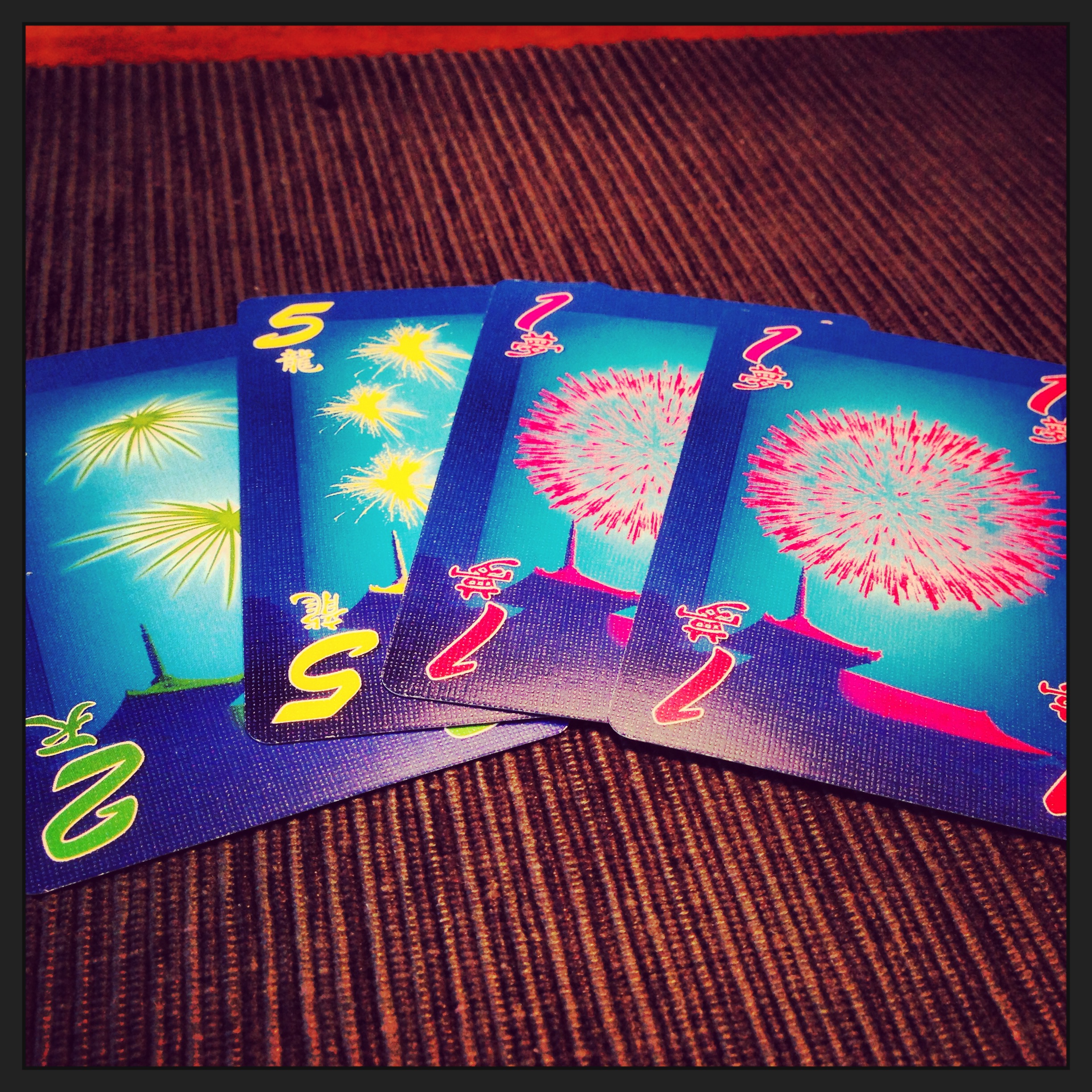 If you discard a card, you simply choose one and lay it aside for all to see. The rules say to make a discard pile that anyone can look at at any time. That's just dumb. You should just lay all cards off to the side, and place them such that everyone can see all of the discards all of the time—you can put them perpendicular to the main display so that you don't confuse the two, but in practice, this isn't really a problem.
If you discard a card, you simply choose one and lay it aside for all to see. The rules say to make a discard pile that anyone can look at at any time. That's just dumb. You should just lay all cards off to the side, and place them such that everyone can see all of the discards all of the time—you can put them perpendicular to the main display so that you don't confuse the two, but in practice, this isn't really a problem.
You obviously have to be very careful about what card you discard, but every card other than the 5 has more than one copy, so you often have another chance to get that number out. If you discard a card, you can take a blue clock token from the box and put it back on the table—and then you draw a new card.
If you play a card, you choose one and attempt to play it to the table.
If it fits in an open space—for instance, if you play a red 2 and the red 1 is already down, you simply place it down in the correct spot, and your turn is over. You don't have to "call" which card it is before you pull it out of your hand and finally see what it is. If it fits, great!
If it doesn't fit, you put the card in the discard display, and you take the top black fuse token and put it in the box.
If you place the number 5 card onto one of the fireworks—thus completing that color—you get a bonus, free blue clock token back and available.
The game ends in one of three ways.
If you pull the third black fuse token (i.e., you make three mistakes when playing cards), the game ends and you all lose.
If you are able to fully complete all five colors of fireworks, you've won in spectacular fashion with a perfect score: 25 points.
How the game usually ends is that a player takes the last card from the draw pile. Each player, including the person who grabbed the last card, gets one last turn. Once that round is over, you count up your score.
You add up the highest-valued card you managed to play in each of the five colors, and that's your score. The rulebook breaks down what each range of scores means. And that's it!
The game comes with a number of variants, and if you're insane, it comes with a sixth suit, that's muticolored and counts toward every color when you're giving a clue.
Recommendations
Youth group/party game? Yes! I actually think this could be a great game for that. Expect to do terribly, but it forces the teenagers to think...
Family game? Definitely! Well, it won the Spiel des Jahres, but I really do think it would be great. The game recommends this for kids 8+, but I think that's probably too young to play the game well; it's actually fairly hard to give great clues here, and I don't think my 8-year-old would be able to figure that out yet. (But there's no reason not to try; that's how they learn, right?) If you have older kids, this one would definitely work.
Gamers' game? Absolutely! Our group is completely taken with this game. It's been the go-to filler for a while now.

The Verdict
In case you can't tell from the Recommendations section, I think this game is perfect for anyone. It should be in your collection.
I love how different it is. There have been other games where you can't look at your hand (Code 777, for instance), but this one just feels unique to me.
I also like how you can still win, even if you don't play perfectly. This adds to my argument that this is a great game for nongamers. You won't play perfectly—or probably even particularly well—the first few times, but it's okay: You can still win.
The cards are of good quality—though I'll probably still sleeve them. The backs of the cards are asymmetrical, and in this case that's a good thing, as it helps you organize your hand as you want.
One of the cool things is that each group and each person can create their own conventions about how to organize their hands. Some people only put new cards in on the left side of their hand, and will discard off the right side of their hand. If other people know that, and there's a precious 5 on the righthand side and you know she's about to discard it, you might want to make sure she knows it's a 5!
A problem that sometimes crops up in co-op games is that one person will completely dominate the game and basically play the whole game for everyone. In Hanabi, that's not really possible. For one thing, there's never complete information since you don't know your own hand—until the very end of the game. Also, you're really not supposed to talk unless it's your turn and you're giving a clue.
If there's one thing that could doom the game in your group, it's that the game puts a lot of pressure on you. I felt, at least, that I needed to give the perfect clue. This was especially true when I played the first time. Everyone else had played a few times, and since I hadn't, I was always afraid I would "blow it." I'm not normally a nervous player, but for some reason this game did it to me.
The Final Verdict
Look, this game is terrific. It's one of my favorites of this year, and I was pleasantly surprised when it won the Spiel des Jahres. Plus, it's cheap!
Thanks for reading, and please connect with us via social avenues: Facebook, Twitter, Instagram, and YouTube!











